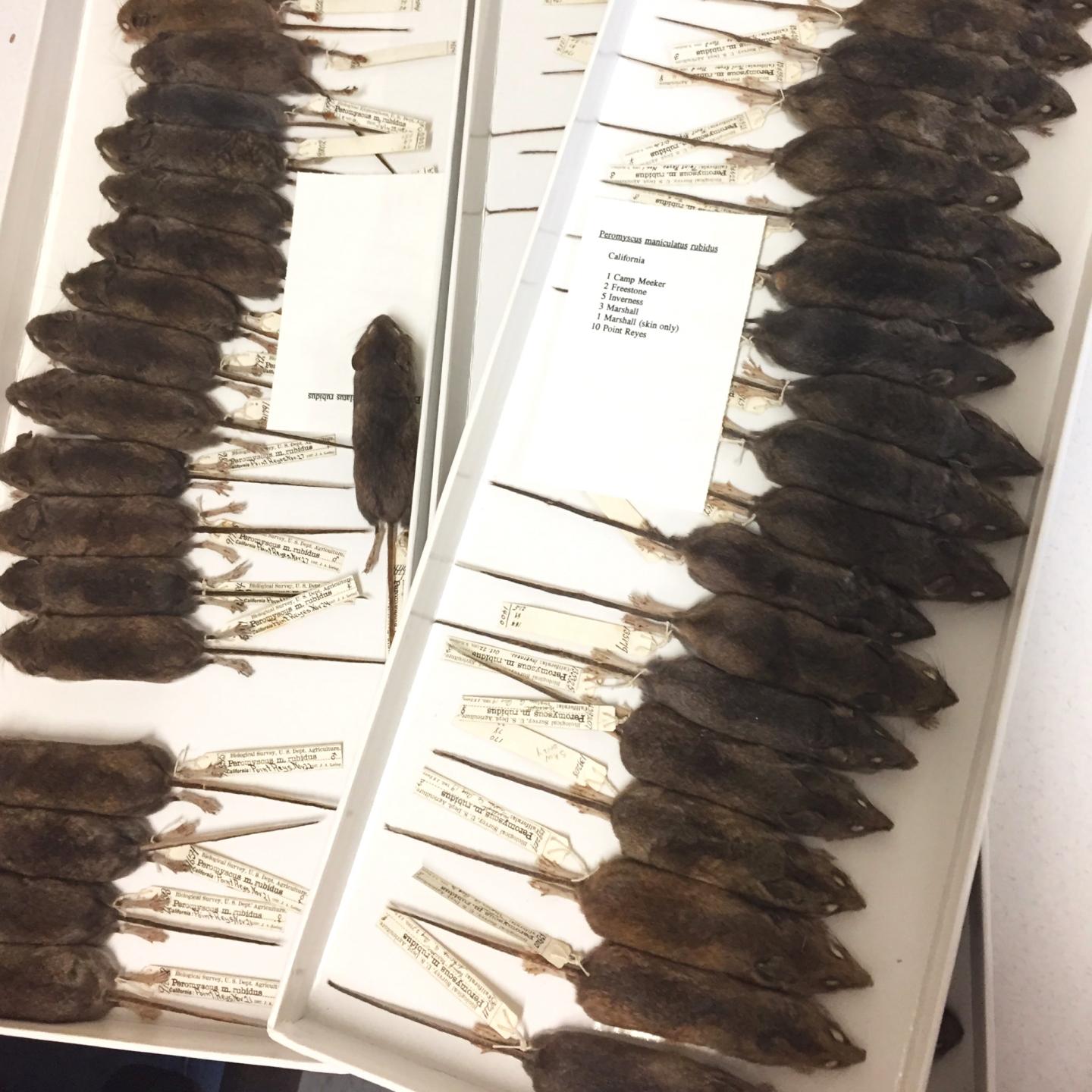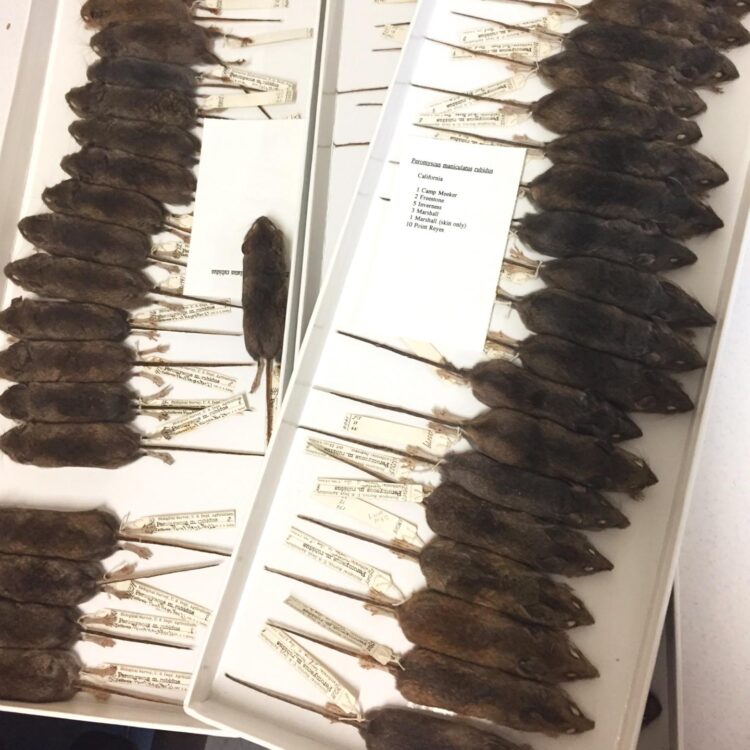
Credit: Bryan McLean
GAINESVILLE, Fla. — According to a well-studied but controversial principle known as Bergmann’s Rule, species tend to be larger in cold climates and smaller in warm ones. As human impacts heat the planet, will animals shrink over time?
To test this, a new study, published today in Scientific Reports, analyzed 70 years of records of the North American deer mouse, Peromyscus maniculatus, arguably the most common and best-documented mammal in the U.S.
Unexpectedly, researchers found deer mice are generally decreasing in mass over time, but this trend may not be linked to changes in climate or human population density, a proxy for urbanization. In another surprise finding, larger-bodied deer mouse populations are getting smaller and smaller-bodied populations are getting larger.
“The most exciting aspect of this study was one that still remains mysterious – deer mice appear to be getting smaller over time, but it doesn’t seem to directly relate to climatic drivers or urbanization,” said study co-lead author Robert Guralnick, curator of bioinformatics at the Florida Museum of Natural History. “Is this generally true for mammals?”
Why study body-size trends in the first place? Body size is a particularly important physical characteristic in warm-blooded animals because it helps maintain the right body temperature for biological functions such as metabolism and heat transfer.
“Even in a small mammal like this, a minor change in body mass could have really important consequences for optimizing those energy balances,” said study co-author Bryan McLean, assistant professor at the University of North Carolina Greensboro and a former postdoctoral fellow researcher at the Florida Museum.
Larger-bodied animals have less body surface – which releases heat – relative to the volume of their bodies, so they may cope with the cold better than their smaller-bodied kin, the thermodynamic foundation of Bergmann’s Rule. Because body size affects thermoregulation, changes in body size could influence animals’ resilience to climate change.
To examine changes in the deer mouse’s body size in relation to space, time, climate and human population density, Guralnick and his collaborators turned to three sources of data: museum collections, the “North American Census of Small Mammals” and the National Ecological Observatory Network, known as NEON. Using these resources, they compiled body length and mass measurements taken by thousands of researchers across the U.S. over seven decades. The result? A certifiable time machine to observe these mice throughout recent history and the first study of body-size trends in mammals that combines data from published surveys and museum collections.
“I don’t think anyone has combined museum data with NEON data and historical data like we have. We have such a larger dataset because of this,” said study co-lead author Maggie Hantak, a postdoctoral researcher at the Florida Museum. “It’s a really novel way to see how body size is changing over space and time.”
Their findings indicate deer mice in colder climates tend to be longer and have bigger body mass, consistent with Bergmann’s Rule. As temperature changed across space, deer mice body mass decreased, which also aligned with the researchers’ hypothesis. As precipitation increased, however, researchers expected an increase in mouse body mass due to the boost rainfall can give to foraging resources. Instead, body mass also decreased.
The findings were more complicated in cities: Urban areas are significantly warmer than the surrounding rural landscape, a phenomenon known as the urban heat island effect. According to Bergmann’s Rule, mice should be smaller in urban areas to beat the heat. But since human food and garbage abound in cities, mice could grow larger by tapping into that constant supply of fuel.
The data showed that as human population density increased, deer mice populations tended to retain the same body mass, but grow shorter in length. This could mean the urban heat island effect trumps the benefit of endless food resources – or simply that shorter mice are better at hiding from humans.
But the real head-scratcher came when the team decoupled mouse mass from all of these factors. They still noted a general decrease in mass over time, hinting that the roles of climate and urbanization in influencing body size may be more complicated than previously thought.
“Preliminarily, this is very intriguing, but we still don’t know what drives this decrease in mass,” Guralnick said.
The team will now turn its attention to analyzing body size across all mammals, he said.
“One big question is what the future will look like for mammals across the planet, and the way we’re going to know best is by knowing what’s happened in the past,” Guralnick said. “Natural history collections and their data are excellent ways for us to get a comprehensive, often broad, view of change. Body size is a hugely important variable, and it’s one that’s recorded in literally millions of specimen records.”
###
Daijiang Li of the Florida Museum also co-authored the study.
Media Contact
Natalie van Hoose
[email protected]
Original Source
https:/
Related Journal Article
http://dx.





